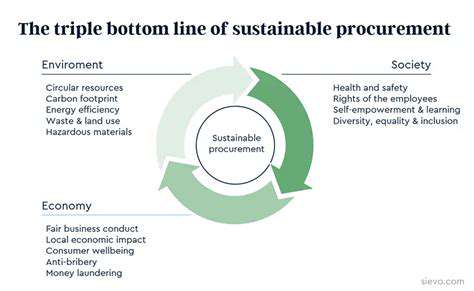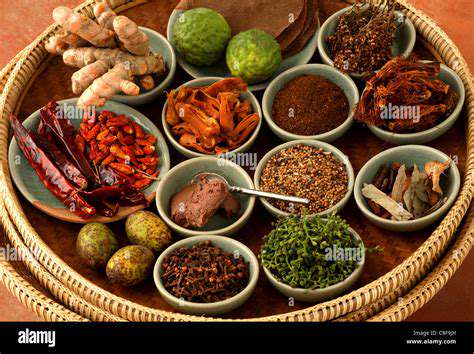Beyond the Taste Buds: Exploring Culinary Traditions
Walking through the bustling alleys of global street food markets, one quickly realizes these are more than mere dining spots. They're living museums of cultural expression where every simmering pot and sizzling grill whispers centuries-old stories. The aroma of turmeric-laced curries mingling with wood-fired flatbreads doesn't just tempt the palate - it carries generations of culinary wisdom. In Mumbai, the rhythmic shaping of vada pav mirrors the city's fast-paced energy, while Tokyo's meticulous yakitori preparation reflects Japanese precision.
What truly fascinates is how cooking methods encode cultural values. The communal clay ovens of Morocco speak to collectivist traditions, while the individual steaming baskets of Shanghai embody efficiency. These edible artifacts reveal more about civilizations than any textbook could. When vendors hand down recipes through oral tradition, they're preserving intangible cultural heritage as valuable as any UNESCO site.
The Social Fabric of Street Food
Dawn breaks over Bangkok's floating markets as wooden boats laden with tropical fruits converge. The scene isn't just transactional - it's where fishermen's daughters teach bankers how to select the sweetest mangoes. Here, food becomes social glue, dissolving barriers between classes and generations. The shared experience of eating steaming bowls of pho at Hanoi's sidewalk stalls creates bonds no five-star restaurant could replicate.
These micro-communities develop their own rhythms and rituals. Regulars at Mexico City's taco stands develop personal relationships with taqueros, who remember preferred spice levels and garnishes. Such personalized service transforms quick meals into meaningful human connections. When elderly Italian signoras teach college students how to properly eat arancini at Palermo's markets, they're passing on cultural literacy one bite at a time.
The Economic Engine of Communities
Behind every food cart lies an economic ecosystem. Jakarta's sate vendors support entire supply chains - from peanut farmers to bamboo skewer artisans. These microenterprises collectively form shock-absorbent economic networks that often outlast formal sector downturns. When tourism disappeared during pandemic lockdowns, Bangkok's street food networks evolved into neighborhood meal hubs, demonstrating remarkable resilience.
Preserving Culinary Heritage Through Innovation
Today's street food innovators walk a delicate tightrope between tradition and progress. In Seoul, third-generation tteokbokki vendors now offer gluten-free versions alongside classic recipes, while maintaining traditional fermentation techniques. This evolutionary approach keeps heritage relevant without diluting authenticity. When Lima's ceviche masters incorporate Amazonian fruits into ancestral recipes, they're writing new chapters in culinary history while honoring the original text.
The Future of Global Street Food Markets

Global Trends in Street Food Innovation
The current street food renaissance blends tradition with audacious creativity. In Singapore, heritage chicken rice now appears in sushi-like presentations, while Berlin's doner kebabs incorporate Korean gochujang. This cross-pollination creates exciting new food languages while maintaining grammatical roots in tradition. The most successful innovations come from vendors who deeply understand original flavors before remixing them.
Health-conscious adaptations are rewriting street food norms. Bangkok's mango sticky rice now features coconut sugar alternatives, and Mexico City's elote stands offer vegan mayonnaise options. These aren't concessions but creative challenges that push culinary boundaries while respecting cultural essence.
Technological Advancements in Street Food Operations
Smart carts in Tokyo now feature built-in NFC payments and real-time ingredient tracking, while AI-powered apps help Bangkok vendors predict daily demand. Such tech integration preserves the human touch while eliminating operational friction. QR code menus in Marrakech's food stalls provide multilingual access without losing the personal vendor-customer dynamic that defines street food culture.
The Role of Culture and Tradition in Street Food
As street food globalizes, authenticity becomes both challenge and opportunity. Istanbul's simit sellers maintain centuries-old sesame crust techniques even as they adopt digital payment systems. The magic lies in protecting cultural DNA while allowing for evolutionary adaptation. Food historians now work with Hanoi's pho vendors to document traditional broth methods before they're lost to modernization.
Sustainable Practices and Ethical Sourcing in Street Food
Bangkok's jok vendors now use banana leaves instead of plastic, while Mumbai's bhel puri stalls source puffed rice directly from rural cooperatives. These sustainability measures create virtuous cycles - eco-friendly practices attract conscious consumers who support traditional methods. The future belongs to vendors who view sustainability not as cost but as cultural preservation investment.
Ethical sourcing transforms street food into a force for good. Lima's anticucho makers partner with free-range alpaca farmers, while Marrakech's snail soup vendors work with sustainable harvesters. When consumers understand their satay supports entire ethical supply chains, street food becomes taste activism. This alignment of values and flavors points toward a more conscientious culinary future.











